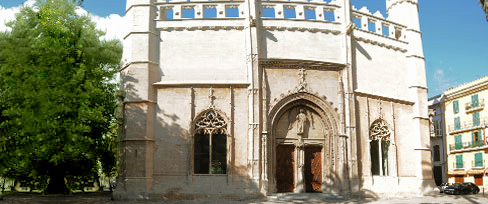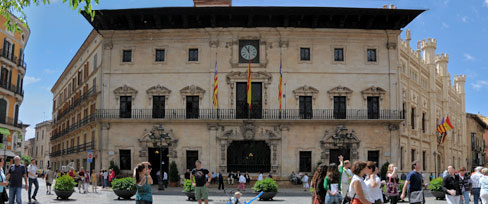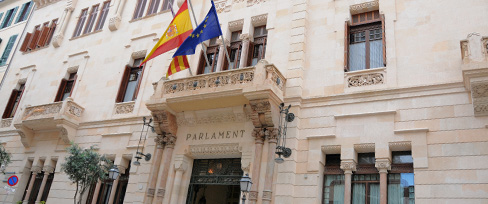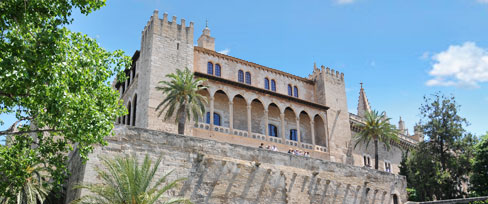About palma de Mallorca
Palma is, with a little less than 400.000 inhabitants, the capital city of the Autonomous Community of the Balearic Islands. The town’s origins lead back until the talaiotic era and roman times. After the reconquest by King Jaime I the Conqueror on 31st December 1229, many monumental buildings from the Muslim period were destroyed. Still, the old town or historic city has maintained its Arabic character. An amazing urban architecture and the presence of art objects in public areas are remarkable.
The city’s pulse is strongly determined by the annual event agenda and several sailing events, especially competitions. Some of these events include the participation of King Felipe VI and several members of the Royal Family. The Royal Family spend their summer holiday at the Royal Residence called „Palacio de Marivent“ in the Bay of Palma, whereas the Almudaina Palace, situated next to the Cathedral, is currently used by the King for official ceremonies.
 The Cathedral "La seu"Clearly visible from the seaside, the Cathedral “La Seu” is to be considered the town’s landmark. It is a brilliant example for the Mediterranean gothic style and one of the most impressing architectural constructions of Spain. It was King James I who ordered its construction on the site of an Arab Mosque in the 8th century, motivated by his gratitude for his victory over the Muslims. One of its main altars was created by Antoni Gaudí, while one of its Windows was designed by the contemporary German artist Nils Burwitz.
The Cathedral "La seu"Clearly visible from the seaside, the Cathedral “La Seu” is to be considered the town’s landmark. It is a brilliant example for the Mediterranean gothic style and one of the most impressing architectural constructions of Spain. It was King James I who ordered its construction on the site of an Arab Mosque in the 8th century, motivated by his gratitude for his victory over the Muslims. One of its main altars was created by Antoni Gaudí, while one of its Windows was designed by the contemporary German artist Nils Burwitz.
 La LonjaThe historical Lonja de Palma is a jewel of Catalonian gothic style. It was built during the 15th century following the plans of the architect Guillem Sagrera. When the Spanish Emperor Carlos I and V of Germany first caught sight of it, he thought to find himself standing in front of a church due to its constructive form which reminds both of religious and profane architecture. In its interior part, the splendid columns, fine masterpieces of architecture and art, rise up to the building’s ceiling like palm trees.
La LonjaThe historical Lonja de Palma is a jewel of Catalonian gothic style. It was built during the 15th century following the plans of the architect Guillem Sagrera. When the Spanish Emperor Carlos I and V of Germany first caught sight of it, he thought to find himself standing in front of a church due to its constructive form which reminds both of religious and profane architecture. In its interior part, the splendid columns, fine masterpieces of architecture and art, rise up to the building’s ceiling like palm trees.
 Ayuntamiento (City Hall)
The City Hall is made up by a lavishly decorated facade which houses the so called "bank of the lazy". In fact, today it is a favorite place for passers-by to sit down and take a rest. Hidden in the ornamentation of the facade, the visitor finds the images of wall lizards as a symbol of fortune. The beautifully decorated rooftop which protrudes from the facade, a very typical element of the building, also deserves a look "upwards". In the entrance area, the visitor is received by two large wooden figures of a man and a woman, the so-called "Giants", which represent the people.
Ayuntamiento (City Hall)
The City Hall is made up by a lavishly decorated facade which houses the so called "bank of the lazy". In fact, today it is a favorite place for passers-by to sit down and take a rest. Hidden in the ornamentation of the facade, the visitor finds the images of wall lizards as a symbol of fortune. The beautifully decorated rooftop which protrudes from the facade, a very typical element of the building, also deserves a look "upwards". In the entrance area, the visitor is received by two large wooden figures of a man and a woman, the so-called "Giants", which represent the people.
 El Parlamento
The historical Lonja de Palma is a jewel of Catalonian gothic style. It was built during the 15th century following the plans of the architect Guillem Sagrera. When the Spanish Emperor Carlos I and V of Germany first caught sight of it, he thought to find himself standing in front of a church due to its constructive form which reminds both of religious and profane architecture. In its interior part, the splendid columns, fine masterpieces of architecture and art, rise up to the building’s ceiling like palm trees.
El Parlamento
The historical Lonja de Palma is a jewel of Catalonian gothic style. It was built during the 15th century following the plans of the architect Guillem Sagrera. When the Spanish Emperor Carlos I and V of Germany first caught sight of it, he thought to find himself standing in front of a church due to its constructive form which reminds both of religious and profane architecture. In its interior part, the splendid columns, fine masterpieces of architecture and art, rise up to the building’s ceiling like palm trees.
 Palacio de la Almudaina
What once was the Alcazar del Emir and later the residence of the Crown of Aragon, nowadays houses the Military Headquarters and is used by the King Felipe VI for official acts during his visits in Mallorca. Especially the royal dormitories and the Gothic Chapel of Santa Ana make the Palace well worth seeing.
Palacio de la Almudaina
What once was the Alcazar del Emir and later the residence of the Crown of Aragon, nowadays houses the Military Headquarters and is used by the King Felipe VI for official acts during his visits in Mallorca. Especially the royal dormitories and the Gothic Chapel of Santa Ana make the Palace well worth seeing.

